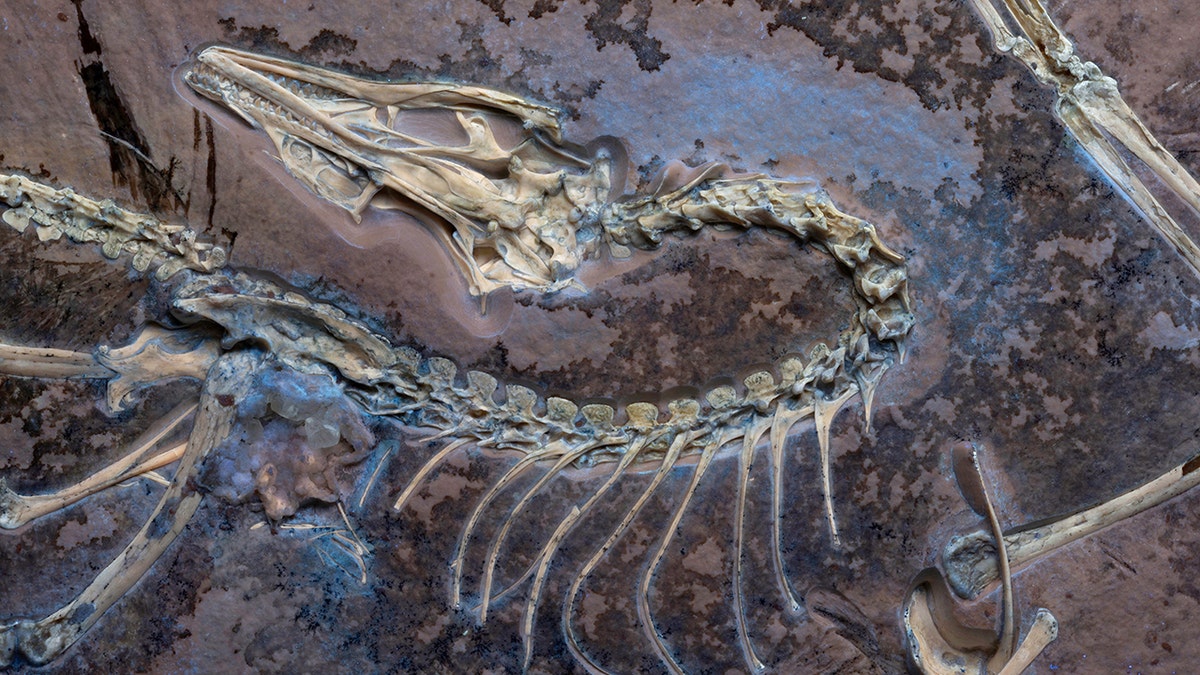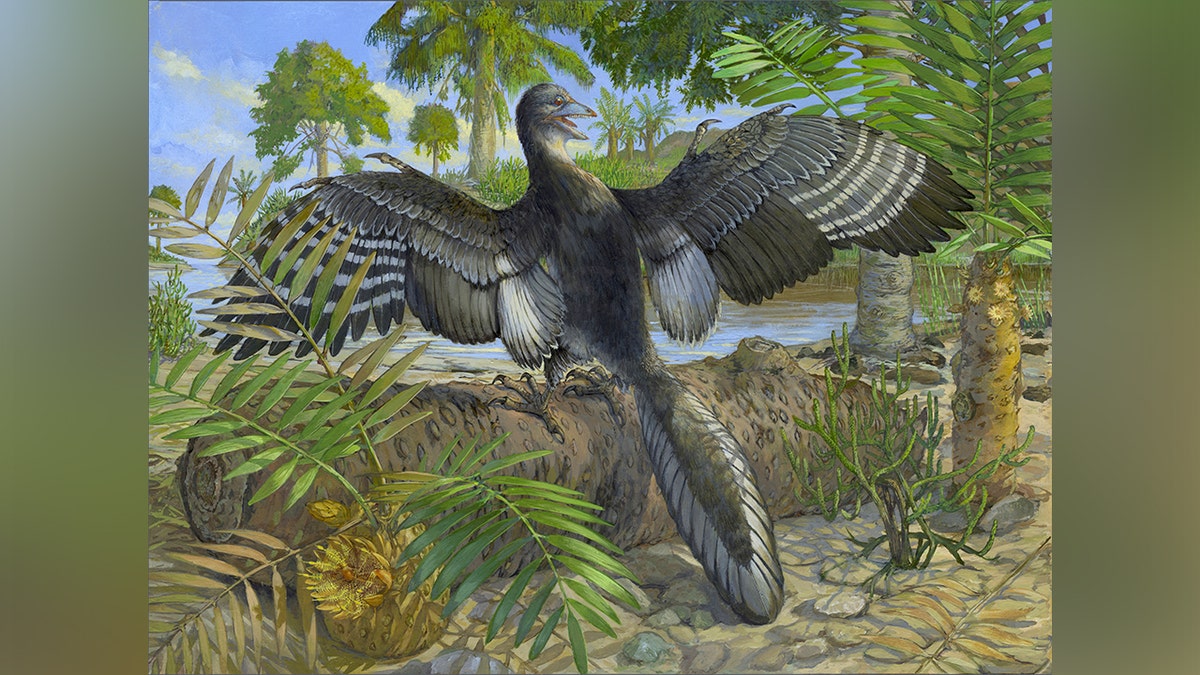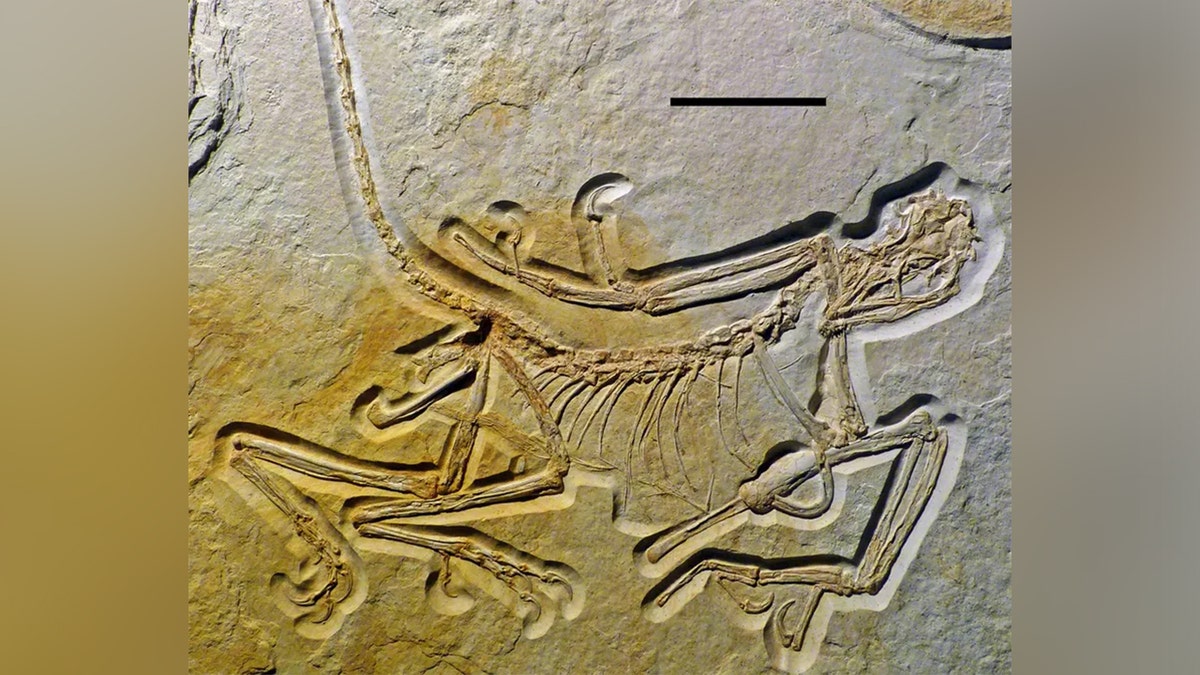Scientists with the Field Museum of Chicago have discovered that a pigeon-sized Archaeopteryx fossil in its collection displays an array of features previously unknown when it comes to the earliest known birds, particularly a bird’s feathers, hands, feet and head.
Reuters reported that the fossil is one of the best preserved and most complete of the 14 known fossils of the specimens identified since 1861.
The first Archaeopteryx fossil, which showed reptile and bird-like features, supported Charles Darwin’s ideas on evolution and showed that birds evolved from dinosaurs.
The new study was able to make out soft tissues in the Chicago fossil using UV light, while CT scans allowed scientists to see details still embedded in the rock. The study showed that 164 years after the first Archaeopteryx fossil was discovered, there is more to learn about the creature that took flight during the Jurassic period 150 million years ago.

A fossil of the Jurassic bird Archaeopteryx, which lived about 150 million years ago in what is now Germany, is pictured under UV light to show soft tissues alongside the skeleton in the collection of the Field Museum in Chicago in an undated photograph. (Delaney Drummond/Field Museum/Handout via Reuters)
The anatomical traits showed that while Archaeopteryx was able to fly, it likely spent more time on the ground and may have been able to climb trees.
Scientists noted that the fossil showed the presence of specialized feathers called tertials on both wings. The tertials are attached to the humerus bone in the upper arm and are also the innermost flight feathers, the scientist explained.
Small-feathered dinosaurs, though, lacked tertials. Researchers said the discovery of the inner flight wings found in many birds today suggests the tertials evolved specifically for flight.
"To generate lift, the aerodynamic surface must be continuous with the body," Field Museum paleontologist Jingmai O'Connor said. "So, in order for flight using feathered wings to evolve, dinosaurs had to fill this gap, as we see in Archaeopteryx.
ANCIENT DINOSAUR FOOTPRINT DATING BACK 100 MILLION YEARS DISCOVERED NEAR COASTAL TOWN

A life reconstruction of the Jurassic bird Archaeopteryx, which lived about 150 million years ago in what is now Germany, in an undated image released by the Field Museum in Chicago. (Michael Rothman/Handout via Reuters)
"Although we have studied Archaeopteryx for over 160 years, so much basic information is still controversial. Is it a bird? Could it fly? The presence of tertials supports the interpretation that the answer to both these questions is 'yes,'" O'Connor added.
When the fossil was unearthed, it was preserved three-dimensionally as opposed to being flat like many fossils. Scientists were able to prepare soft tissue remains while also protecting them, and when hit with ultraviolet light, the tissue glowed.
The species also shows soft tissue on its hands, suggesting the first and third fingers were mobile and could be used for climbing. The soft tissue on its toe pads led scientists to believe the Archaeopteryx spent a lot of its life on the ground and had limited flight capability.
'DINOSAUR HIGHWAY' FOOTPRINTS DATING BACK 166 MILLION YEARS DISCOVERED IN ENGLAND

An Archaeopteryx fossil discovered in Germany. (Humboldt Museum für Naturkunde Berlin)
Another feature scientists found was the palate, or roof of the mouth, confirming that the Archaeopteryx’s skull was immobile, unlike many living birds. But there is evidence of the first stages in the evolution of a trait that allows the beak to move independently of the braincase, as seen in modern birds.
The Chicago fossil possesses the only vertebral column of an Archaeopteryx, which includes two tiny vertebrae at the tip of the tail, showing there were a total of 24 vertebrae, one more than previously thought.
The museum acquired the fossil last year and said it had been in the hands of a series of private collectors since being discovered sometime before 1990.
"This specimen is arguably the best Archaeopteryx ever found, and we're learning a ton of new things from it," O'Connor said.

The Field Museum in Chicago (Google Maps)
In March 2018, researchers suggested Archaeopteryx could probably fly, but in a different way from modern-day birds, in rapid, short bursts over short distances.
CLICK HERE TO GET THE FOX NEWS APP
Archaeopteryx possessed feathers, like a modern bird. However, it also possessed a "long, stiff, frond-feathered tail" and teeth, along with bones in its hands, shoulders and pelvis that were not fused.
Of the 12 fossils of Archaeopteryx that have been found, the first was discovered in the late 19th century by famed German paleontologist Hermann von Meyer. The most recent was discovered by an amateur collector in 2010, announced in February 2014 and described scientifically in 2018.
Reuters contributed to this report.
Greg Wehner is a breaking news reporter for Fox News Digital.
Story tips and ideas can be sent to Greg.Wehner@Fox.com and on Twitter @GregWehner.
.png)
 German (DE)
German (DE)  English (US)
English (US)  Spanish (ES)
Spanish (ES)  French (FR)
French (FR)  Hindi (IN)
Hindi (IN)  Italian (IT)
Italian (IT)  Russian (RU)
Russian (RU)  4 hours ago
2
4 hours ago
2









Comments